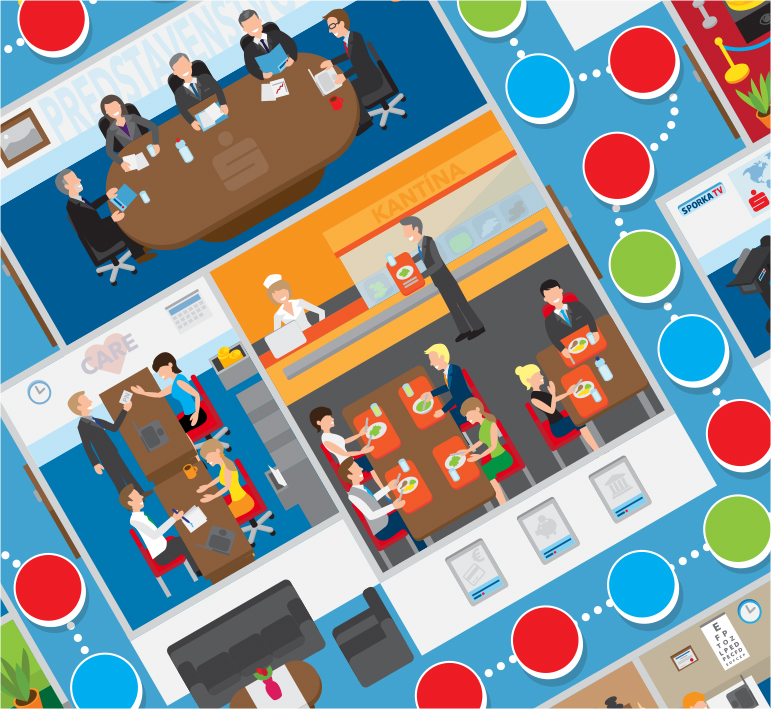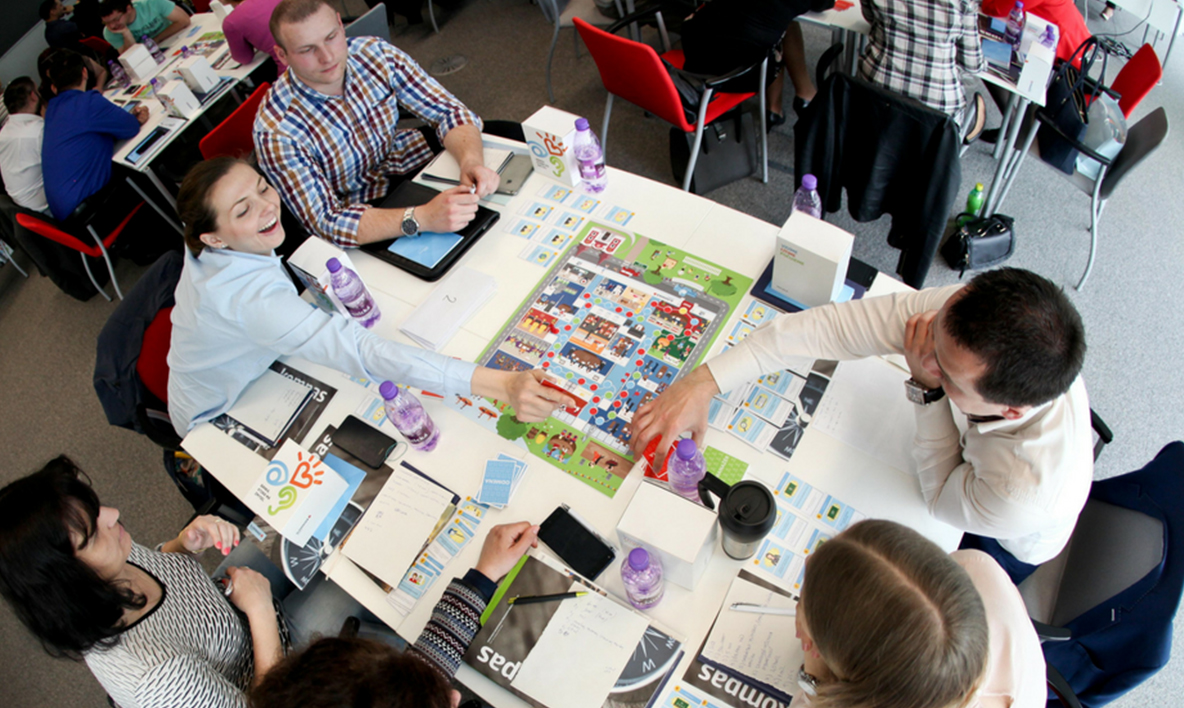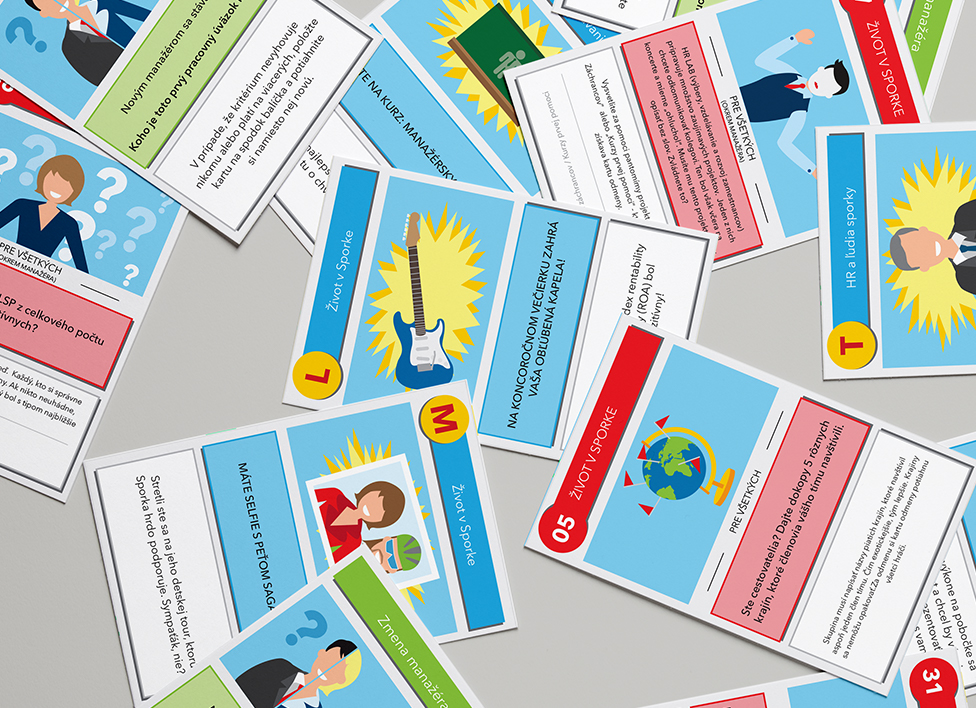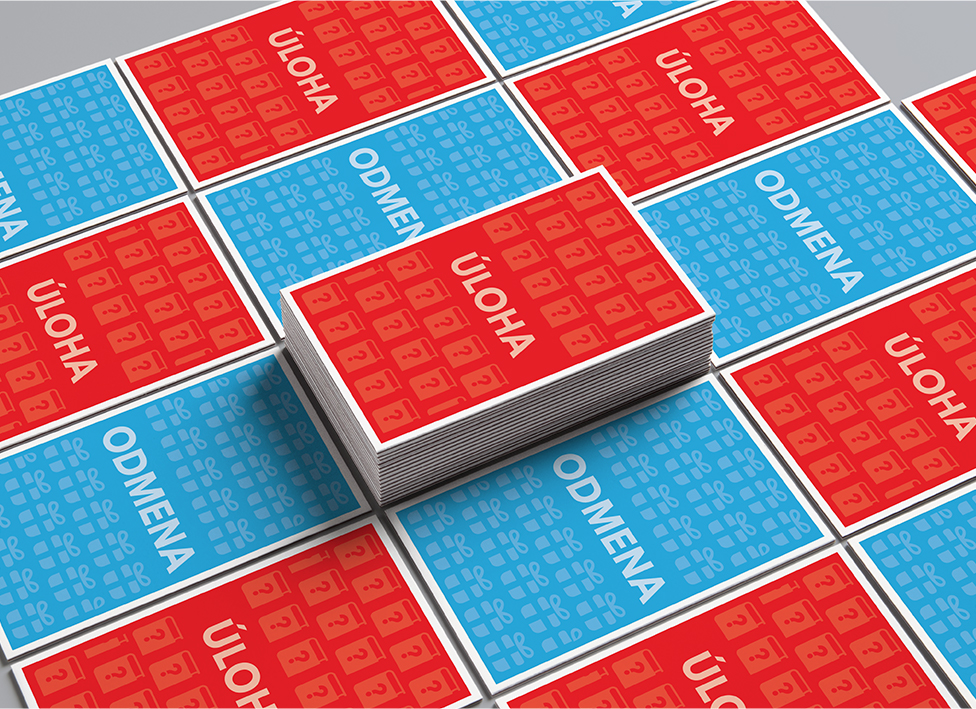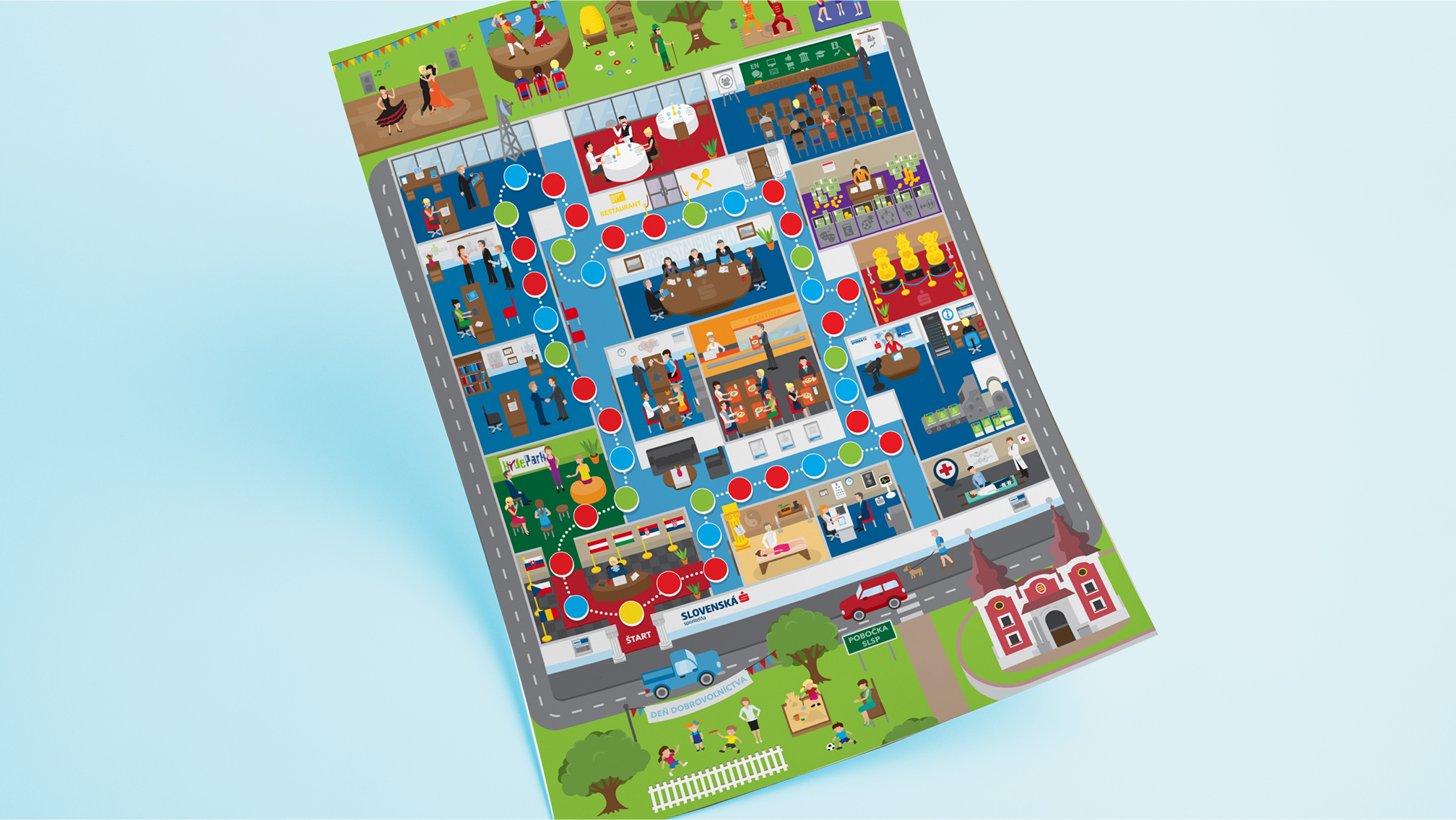 Client
Client
Slovenská sporiteľňa is the largest commercial bank in Slovakia with a full foreign exchange license and a permit for mortgage trading. Slovenská sporiteľňa has the largest share of the deposit market, has the biggest network of its own branches and issues the most bank payment cards.
 Starting point
Starting point
We had to consider the limits and opportunities of the physical space, in which “Adapt” course takes place. Moreover, we had to be empathetic to the course attendees. We framed our challenge from a series of interviews and observations:
The course itself is intense in terms of how much information users had to process. If not served in digestible doses and without an opportunity to instantly apply newly acquired knowledge, that information will often be forgotten by the next day.
The attendees are mostly people, to whom this is new, uncharted territory. They do not know each other, so it is important that they feel safe and welcome when they are closed in a spacious room for a full working day.
Our goal was clear: to create an experience, which allows people to process all the information in digestible pieces and offers a chance to apply it throughout the course. Secondly, to design interactions that help people to get know each other better and relieve their stress while keeping them in their comfort zone.
 Gamified solution
Gamified solution
After hours of prototyping and staying in the physical space, a board game concept was chosen as the most ideal. It combined the concept of a board game, a pawn moving along the board and special cards.
The rules of the game were simple. The board represented the company’s office at the beginning of a new month. Players are teammates who have to work together in order to navigate the branch successfully through the game’s month. During the game, players randomly encounter various cards. Some are “activity” cards, asking questions that test their knowledge about the company in a fun and light-hearted way, some represent rewards that help in solving more challenging questions, and some are special “manager” cards that determine, who will be the manager for the next round (managers move the pawn on the board), based on a specific trait (e.g. who has the longest hair).

Design built on company values
We wanted to incorporate the company’s values directly into the game design. As the company values are: “See”, “Feel” and “Hear”, every interaction and challenge is built on the cooperation between players. They have to listen to each other, search for visual clues on the board, and have empathy in order to succeed in the game.
Firstly, the game seems to be giving rewards to individual players. As they progress in the game, players realise that they have to share their rewards with others in order to progress faster. They become more open and team-centric.
Last but not least, special “Manager” cards provide simple inputs that serve as great icebreakers and conversation starters. By the end of the game, players know each other quite well and can feel safe in their surroundings.
 Main tools we used
Main tools we used
-
Players vs. Deck
To win the game, players do not compete against each other, but try to beat the game as a team.
-
Exchange and solving puzzles
The game is built on the mechanics of exchanging information cards between players. The more they cooperate, the easier it can be to solve future tasks.
-
Narrative and storytelling
To get people really into the state of play, our game had a simple story of an external auditor, who was expected to arrive at their branch to check on their progress. Adding a common “enemy” brought people together and doubled their effort, since they had a clear goal to reach by the end of the game. It helped to keep the pace of the game and to keep the players focused.
 Results
Results
-
Increased satisfaction with the onboarding course
-
More comprehensible understanding of company culture
-
Better understanding and adjusting to the strategy and values of Slovenská Sporiteľňa.
-
The game has been successfully played by hundreds of people and is still used in Slovenská Sporiteľňa countrywide.
